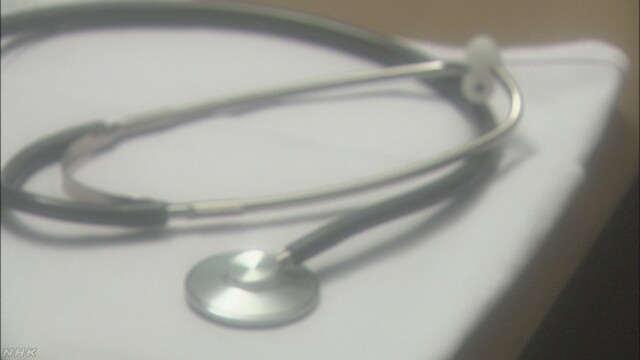Nosocomial infections More than 1,000 including suspected doctors and patients NHK Summary April 24, 16:47
“Nosocomial infections” that are infected with the new coronavirus continue to occur in medical institutions. According to the NHK summary, there are more than 1,000 doctors and patients infected or suspected of being infected at medical institutions nationwide, accounting for nearly 10% of all infected people in Japan. If nosocomial infections occur one after another, it may lead to medical collapse, and how to prevent infections is a major issue.
NHK has summarized the situation of nosocomial infections in various regions as of 21st of this month, three days ago, based on announcements from each local government and interviews with medical institutions.
As a result, the number of medical workers and patients infected with or suspected of being infected with the new coronavirus at medical institutions reached 1086 at about 60 medical institutions nationwide.
There are 513 medical workers, of which 109 are doctors and 181 are nurses including associate nurses.
There are 534 patients.
(* Others such as unknown persons are 39).
By region,
▽ Tokyo is 454,
▽ Osaka is 155,
▽ Hokkaido is 123,
▽ Fukuoka is 62,
▽ Hyogo is 60,
▽ Saitama is 55, and so on.
A total of 11,541 people were confirmed to have been infected in Japan three days before the data was collected, and the number of people suspected of having nosocomial infections would reach nearly 10% of the total.
In many cases, the medical institutions affected by the infection have been affected, such as temporarily suspending the acceptance of patients.There is a risk that medical infections will occur if nosocomial infections occur one after another. It's a big challenge.
Expert "Take measures against the assumption that zero risk cannot be achieved"
Regarding this, Kazuhiro Tateda, the chairman of the Japanese Society for Infectious Diseases and Professor at Toho University, said, "I get the impression that there are more infections in the hospital compared to infectious diseases such as influenza. There is a risk that a person who does not have symptoms will come to the hospital with another illness without noticing it, and it is very difficult to prevent it, so we should consider that it can not reduce the risk to zero. did.
In addition, as a concrete measure, in order to reduce the risk as much as possible, separate medical staff who deal with infected patients and non-infected patients, and make detailed health observations to the medical staff to complain of poor physical condition. It is important that you take a rest immediately if you do.
Furthermore, if a person suspected of being infected is found in the hospital, depending on the situation, everyone other than those who have been in close contact, such as promptly inspecting and isolating all medical personnel and patients, are infected. He points out that measures should be taken on the assumption that there is a possibility.
Professor Tateda said, “Recently, the percentage of people who are positive by PCR test is also increasing, and it seems that it is safe for anyone already infected. Not only the measures in the hospital, but also the virus in the hospital. In order to reduce the number of people who bring in, it is necessary to take measures such as avoiding "three denseness" that are closed, dense, and close, and reduce contact with people by 80%, so that society as a whole does not spread. " I am.

